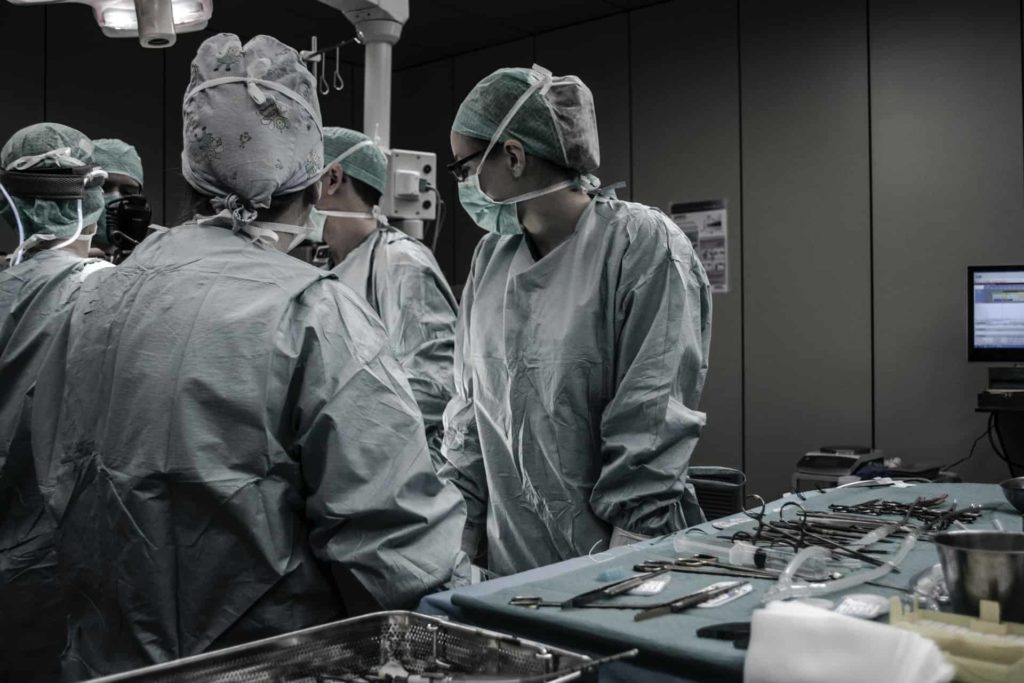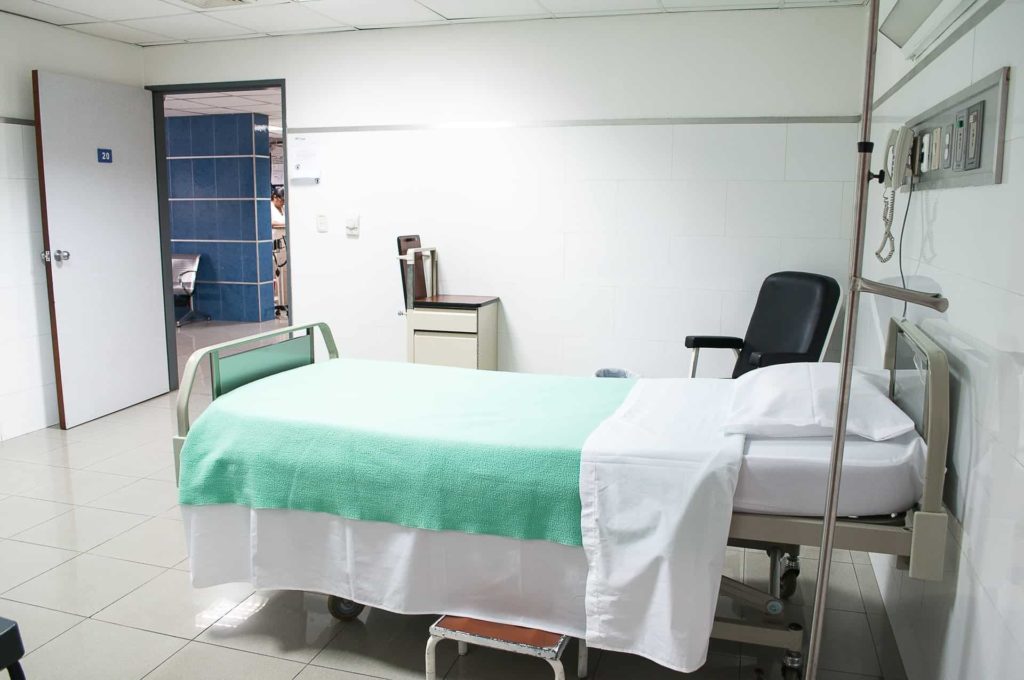
No one visits the hospital for fun—patients come in for check-ups, life-saving care, etc. Unfortunately, it’s not uncommon for patients to pick up infections when going to the hospital for care.
One out of 25 patients will develop a healthcare-associated infection (HAI)—which means over 1.7 million people will contract an HAI, and over 98,000 people die each year as a result.
By having a comprehensive understanding of surgical tubes and drains, hospitalists can help lower this number and save lives.
Related: What Is a Hospitalist?
The Rise of HAIs
After years of decline, HAIs increased significantly in US hospitals, largely due to the pandemic. Before 2020, HAI rates had been declining since 2015, attributed to improved infection control and prevention measures by hospitalists and other healthcare professionals.
The diversion of hospital resources and staff to focus on the care of COVID-19 patients put a dent in those efforts, leading to another rise in healthcare-associated infections.
Let’s explore the different types of surgical tubes and drains and their proper use—the knowledge hospitalists need to help prevent these infections.
Related: Long-Term Covid Symptoms
What Are Closed Suction Drains?
Hospitalists use closed suction drains equipped with plastic bulb attachments to collect fluid from postoperative cavities. Common indications include:
- Abdominal surgery
- Cholecystectomy when there’s a concern for bile leak
- Post-pancreatic surgery
- Post-mastectomies
- Plastic surgery to promote tissue apposition and prevent seroma formation
- Postoperative leakage after a rectal anastomosis
When using a closed suction drain, hospitalists must carefully record the quality and quantity of any fluid drained. Fluid changes can imply various complications, including leaks and bleeds.
Generally, closed suction drains need to stay in place until less than 20 mL of drainage per day. If required, you can leave them in safely for weeks, and they’re often removed during a surgical follow-up. However, closed suction drains may cause complications, including tissue erosion and suturing of the drain, requiring reexploration to remove them.
What Are Penrose Drains?
Hospitalists typically use Penrose drains to keep a space open for drainage or drain fluid. Often, surgeons will use a structure to anchor a Penrose drain to the skin, and common indications include:
- The drainage of an abscess cavity
- Ventral hernia repair
- The debridement of infected pancreatitis
Penrose drains are flexible tubes with both ends open, and unlike closed drains, they permit egress and ingress to facilitate colonization.

What Are Gastrostomy and Jejunostomy Tubes?
Hospitalists most often use gastrostomy tubes for feeding, but you can also use them to decompress anatomic or functional gastric outlet obstructions. Patients who require prolonged enteral access, like those with prolonged mechanical ventilation, may not be able to use oral feeding. Rarely, hospitalists use gastrostomy tubes for gastropexy to prevent the recurrence of hernias or tack a patulous or atonic stomach to the patient’s abdominal wall.
Interventional radiologists, gastroenterologists, and surgeons may place these tubes endoscopically or laparotomy. The latter option is typically reserved for patients with abnormal anatomy or those already scheduled for a laparotomy.
Gastrostomy tubes rarely clog, and in the event that they do, enzymes and carbonated liquids can help dissolve any obstructions. If left to drain, patients may experience electrolyte and fluid loss—it’s crucial to monitor these levels closely.
In addition, hospitalists can use jejunostomy tubes for feeding, which are typically 10-20 cm distal to the ligament of Treitz. Jejunostomy tubes are used in patients who need distal feedings, either because they’ve undergone surgery resulting in a proximal anastomosis that needs time to heal or due to gastric dysfunction. These tubs are more likely to clog than gastrostomy tubes, and they are more difficult to manage. Routine flushes are helpful for mitigating the risk of clogging, and in the case of a clog, you can dissolve the obstruction in the same way as described above for gastrostomy tubes.
What Are Nasogastric and Duodenal Tubes?
Hospitalists use nasogastric tubes to manage small bowel ileus and obstructions. You should place them in the gastric lumen’s most dependent portion, confirming the placement by an abdominal or chest X-ray. These tubes are sump pumps with a double-lumen to ensure airflow. In addition, you can connect nasogastric tubes to intermittent or continuous wall suction set to less than 60 mmHg, avoiding mucosal avulsion.
The output of these tubes should decrease when the obstruction is removed, and the patient’s symptoms of vomiting, nausea, and distension improve. The timing of removal depends on the resumption of bowel function. In addition, a persistent high output in patients with other indicators of bowel functions could suggest postpyloric placement, which you should check by performing a new X-ray.
How Should Hospitalists Use Surgical Tubes and Drains Responsibly?
Surgical tubes and drains are used for monitoring postoperative abscesses or leaks to collect physiologic fluid and minimize dead space. Hospitalists caring for surgical patients are often the first providers to note changes in the volume or color of these drains.
Hospitalists should closely monitor those two factors closely, and stay in close contact with the surgeon, notifying them of any changes and obtaining new imaging as necessary.
Surgical drains and tubes have different placement indications, and alterations in the quantity and quality of their output can indicate clinical status changes—hospitalists should understand how to handle the initial troubleshooting.
Related: How Much Do Hospitalists Make?
What to Tell Patients About Home Care and Office Removal of Tubes and Drains

When sending a patient home with a surgical drain, you should provide them with information about how to care for it:
- Protect it: Don’t let it dangle freely or in a way that it could accidentally get dislodged.
- Avoid bathing: Treat the area like any open wound—don’t soak it in water.
- Empty it: When it gets full, they’ll need to empty the drain (twice a day or more).
- Change the dressing: Ensure they note the color of fluid when changing their bandage.
Additionally, let them know that the drain will get removed in the office (don’t let them take it out at home!), and once it’s out, they’ll likely need to keep the area covered for a few days and avoid soaking or swimming.
Get in touch with our OptiMed Doctors today—see how our hospitalists can help your hospital provide quality care to your patients and reduce the risk of HAIs.
